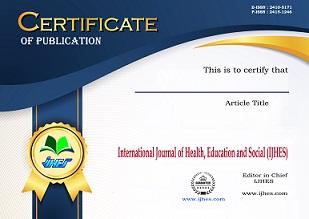Iron Consumption and Anemia in Adolescent Girls in Junior High School 1 Tanjung Sari, South Lampung
Abstract
The prevalence of adolescents with a lack of macro- and micronutrients is quite high, most of which manifest as anemia. The need for iron in adolescent girls is more than that of boy because every month the adolescent girls have menstruation which causes iron production to increase. In Indonesia, it is estimated that most anemia occurs due to iron deficiency due to insufficient intake of iron source foods. This study aims to examine the relationship between iron consumption and the incidence of anemia in adolescent girls of Junior High School (SMPN) 1 Tanjung Sari, South Lampung. This study is an analytical observational study with a cross-sectional research design carried out from January to March 2022 with the research sample being adolescent girls in VII and VII grade with total of 41 respondents. Iron consumption assessment was carried out using a semi-quantitative food frequency questionnaire (SQ-FFQ) and a 3x24 hour food recall. The results of this study showed that 22 respondents (53.7%) had moderate anemia and 19 respondents (46.3%) respondents had mild anemia, the result of iron consumption assessment using SQ-FFQ is 10.27mg and using food recall is 5.34mg. The results of a bivariate statistical analysis showed no significance relationship between anemia and adolescent girls iron consumption with p value 0.630
Downloads
Copyright (c) 2022 Anisa Nuraisa Jausal, Reni Zuraida, Susianti

This work is licensed under a Creative Commons Attribution 4.0 International License.









